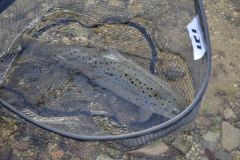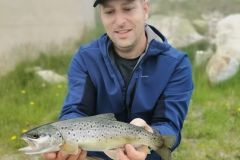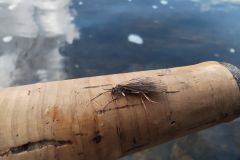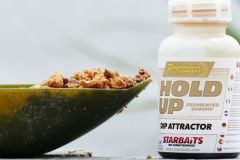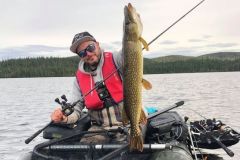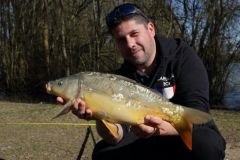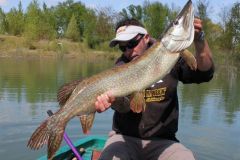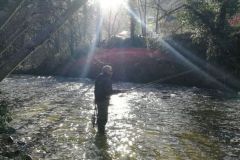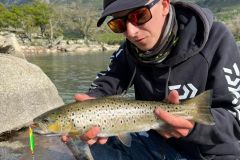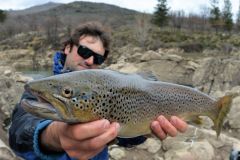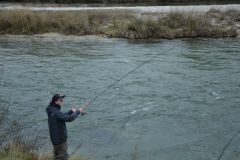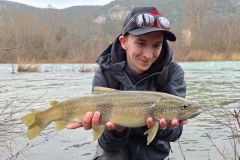I realize that this type of trout fishing isn't very "sexy", but nevertheless, every time I do it, the beautiful specimens are there. What a pleasure to see the float sink more or less violently, causing the angler's heart to pound, especially at the start of the season.
A simple objective: beach fishing in wide rivers
Most of the time, these spots are abandoned by anglers, and it's mainly in the afternoons that fly fishers come to try their hand at gobbling with the famous March Browns. Some fine specimens can be caught because, after spawning, trout tend to rest on the calm. They search for food without moving too far. More often than not, they will find themselves in a vein of water that will provide them with the calories they need to recharge their batteries, but without too much effort.
It's these veins of water that should be targeted first without entering the water (if possible) so as not to spook potential fish. In the same vein as when fishing with a toc, I try to drift parallel over a distance of about twenty metres. The advantage of the float is that it allows the bait to reach spots that are less solicited because they are further away and therefore more promising.
Line description
Everyone knows that a float is a balsa or cork element that floats on the surface of the water and is balanced according to the sinker. There are, of course, several types of float: solid, long, pear-shaped... Some are used for match fishing: avons, wagglers, sticks... As I live in the Toulouse region, I stick to a safe bet: the bouchon toulousain, which is well-proportioned and holds up well in deep, calm water.
The choice of float size and weight depends on the fishing grounds, with a maximum weight of between 1 g and 2 g.
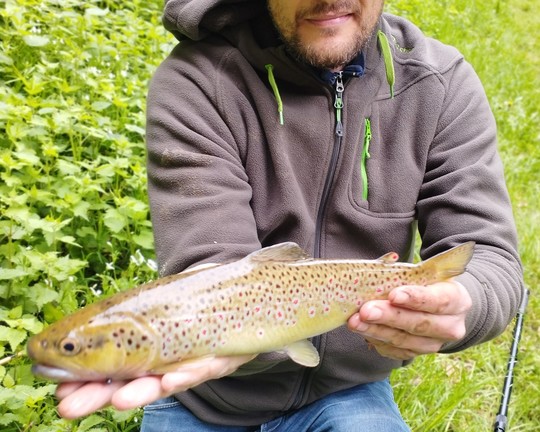
Rigging is relatively simple, but must be adapted to the speed of the current. In fact, as all the theorists and fine anglers have said, if your sinkers go before your bait, the trout will quickly stall and refuse the meal presented! You therefore need to make an effort on the quality of the leader, which should be fairly fine and well organized; in fact, some anglers prepare their leaders in advance. A 12/100 diameter fluorocarbon leader seems to be the most suitable; you can go up to 14/100, but no more, in my opinion, as the waters are often crystal-clear at the start of the season (if there's no snowmelt).
Enough has been said by trout specialists, but let's recall a few basics. The sinker is the essential element of your line. Most of the time, I use a sinker similar to the one used by anglers using a toc. In other words, a sinker about ten centimetres from the hook (in summer, I position it higher), then five centimetres above, a second, slightly larger sinker and two or three other sinkers two centimetres apart.
The lead weight increases from the hook to the line body. The number of sinkers should balance your float and, above all, make your bait flow at the same speed as the current and as close as possible to the bottom where the trout are holding. I can only advise you to observe the spots you're going to fish. Giving yourself a particular type of lead would be pointless. As regards the connection between the leader and the line body, there are two schools of thought: either the loop-in-the-loop technique, or using a small barrel swivel.
Above all, don't let it go to your head!
As far as equipment is concerned, you'll need a 3.90-meter (3-piece) match rod fitted with a fixed reel for match fishing, which you'll fill with 14/100 or 16/100 line. In your fishing vest or chest-pack, don't forget to take a box of sinkers, a spool of 12/100 line, a few plugs and hooks just in case (if you don't know how to set your own hooks yet, you can always buy pre-set hooks). When I was young, I used to take a lot of equipment, but now I only take the essentials I mentioned above.
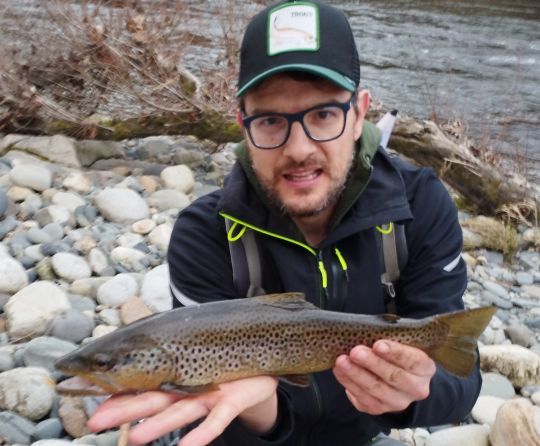
For the days following the opening, I have a weakness for the larger moths, which are the bait of choice. Bait size will decrease towards the end of the season, including for worms.
The most suitable first-category rivers are those that are wide enough and flow in the foothills, on the plains, with alternating currents and beaches. The best spots for this technique (which is similar to stalking for carp anglers) are areas between 50 centimetres and 2 metres deep, beyond which you'll be bored by the depth.
On the beaches you'll be fishing, first try the edges and then the arrival of the main current, then work your way down the beach, concentrating on the end. Sometimes, trout can be found in these areas.
Now all you have to do is find the best place to practice this fishing technique, which may not be very sexy, but is still very effective.




